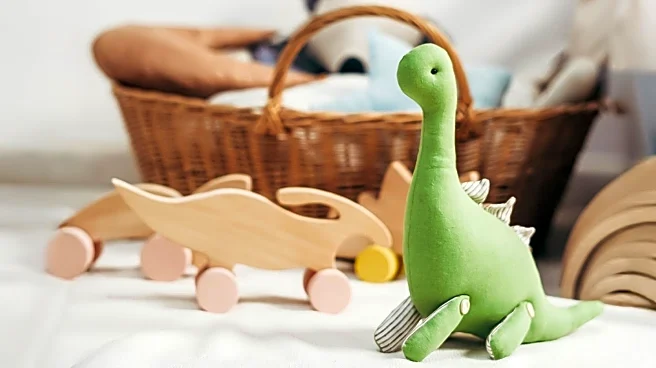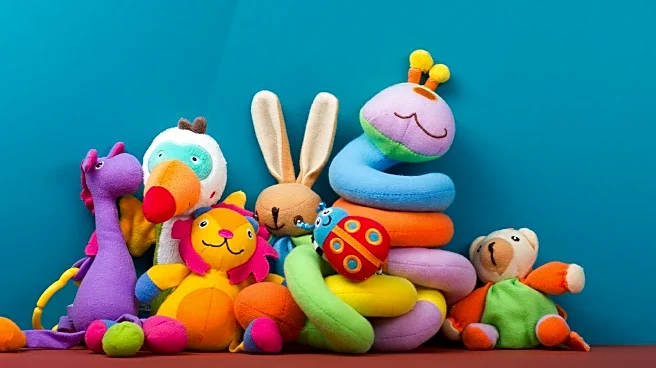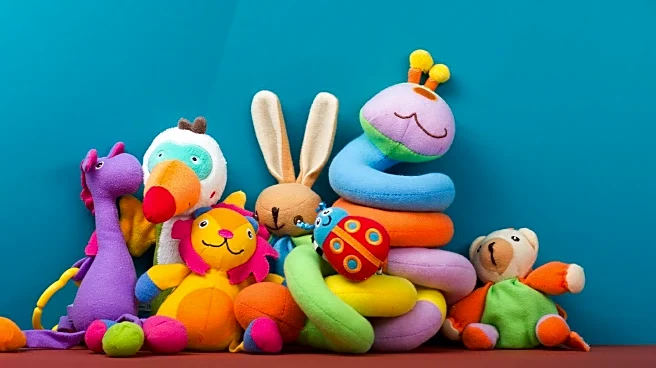What's Happening?
Jellycats, the soft plush toys known for their quirky smiles, have become increasingly popular among young adults, driven by a desire for comfort and nostalgia. The trend, which began with nostalgic videos on TikTok and Instagram, has led to a significant increase in Jellycat's global income, reaching $252 million by the end of 2023. Influencers like Ellie Hinchliffe have showcased extensive collections, with some individuals owning hundreds of these toys. According to Quinn Harper-Thorpe, a psychotherapist, the surge in popularity is attributed to the toys' ability to provide emotional relief in a world that often feels harsh and overstimulating.
Why It's Important?
The Jellycat trend highlights a broader societal need for comfort and emotional grounding, particularly among young adults facing financial stress and uncertainty. This phenomenon underscores the psychological impact of consumer behavior, where individuals seek solace in nostalgic items to cope with emotional overload. The trend also reflects the economic implications of comfort spending, as individuals may exacerbate financial worries by repeatedly purchasing these items. Understanding this behavior can inform strategies for addressing emotional needs without financial cost, potentially influencing consumer habits and mental health approaches.
What's Next?
As the Jellycat trend continues, there may be increased interest in alternative methods for achieving emotional comfort without financial expenditure. Psychotherapists and mental health professionals might explore new ways to provide emotional support that aligns with the needs of young adults. Additionally, the Jellycat company could expand its product offerings or marketing strategies to capitalize on this growing demand. The trend may also prompt discussions on the role of nostalgia in consumer behavior and its impact on financial decision-making.
Beyond the Headlines
The Jellycat phenomenon raises questions about the ethical implications of marketing nostalgia-driven products to vulnerable demographics. It also highlights the cultural significance of nostalgia in shaping consumer preferences and emotional well-being. Long-term, this trend could influence the development of products and services designed to meet emotional needs in a sustainable and financially responsible manner.











